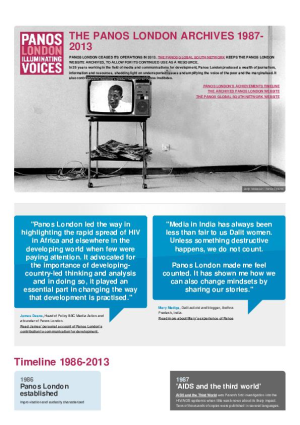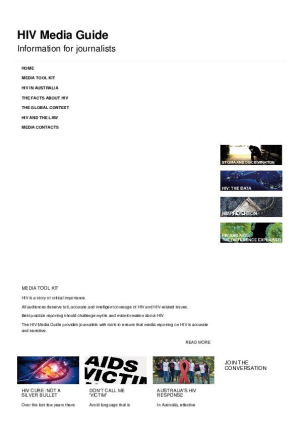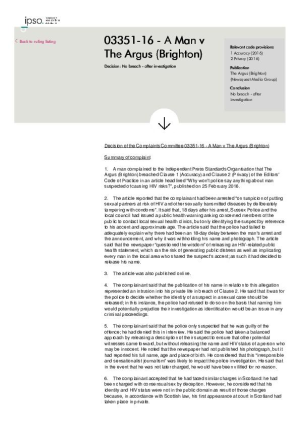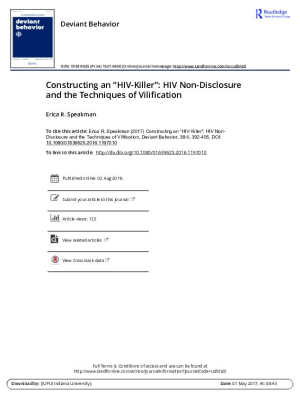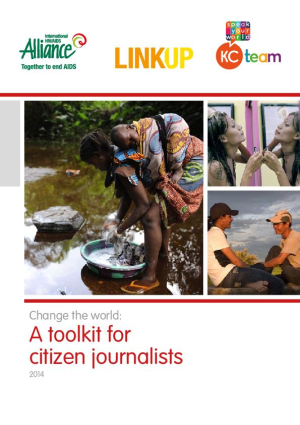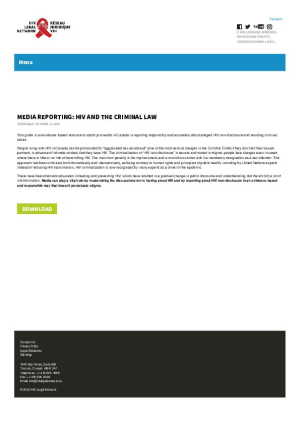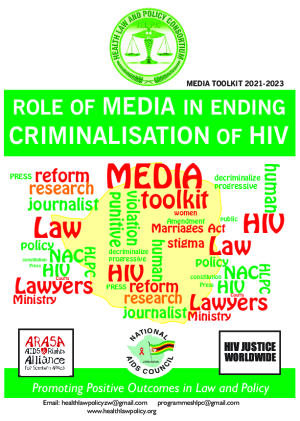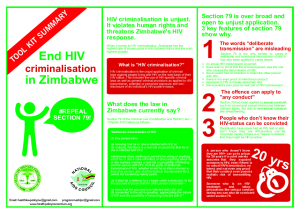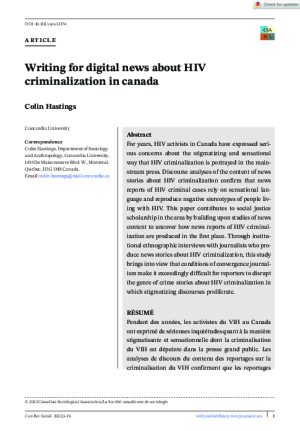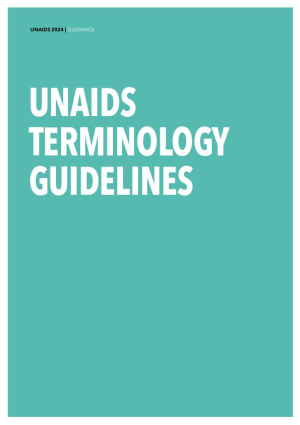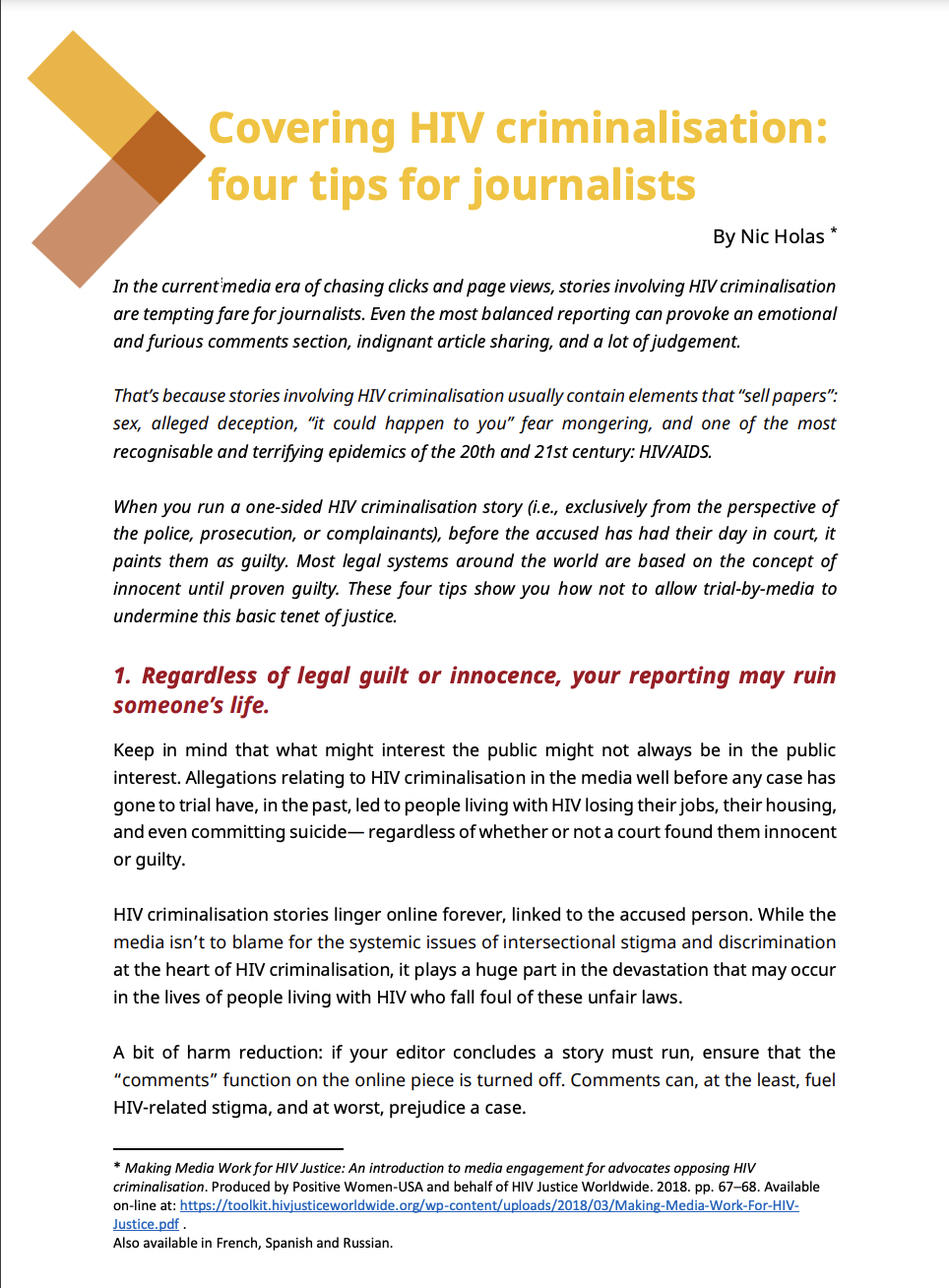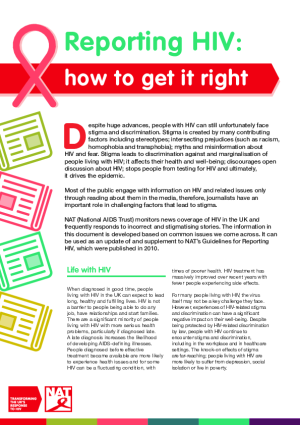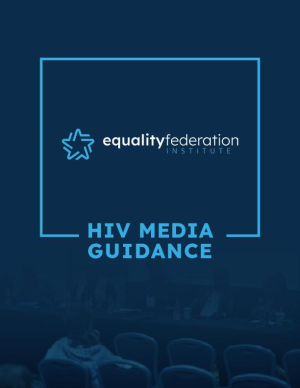Argues that by speaking out, people with HIV and leaders among African communities can raise awareness of the discrimination they experience. Suggests HIV advocates can get to know the media and work with journalists to tell their stories on their own terms, spotlighting inaccurate and misleading coverage and targeting stigma. Includes language guide.
Communication and media
Guidelines for responsible journalism
The HIV Media Guide
Provides journalists with tools to ensure that media reports on HIV are accurate and sensitive. With tips for best practice, links to useful resources and a section on HIV criminalisation.
Decision of the Complaints Committee 03351-16 – A Man v The Argus (Brighton)
Press complaints ruling about whether or not The Argus newspaper in the UK was right publishing the name of man arrested “on suspicion of putting sexual partners at risk of HIV" before he was charged. The complaint was not upheld.
Constructing an “HIV-Killer”: HIV Non-Disclosure and the Techniques of Vilification
An analysis of the notorious Canadian criminal case of Johnson Aziga. The article outlines five key ways that people living with HIV who do not disclose their status to a sexual partner are characterised as dangerous by both the criminal justice system and the media.
Change the world: A toolkit for citizen journalists
This training manual helps lay the foundation for civil society advocates to become citizen journalists. It brings together journalism skills and advocacy goals to help Key Correspondents share their perspectives and experience with decision makers and wider audiences to influence the discourse around HIV and related issues. The manual introduces the basic components of journalism; so correspondents can write their stories with accuracy and using a journalistic approach to improve the potential of being published in mainstream media. It is a ‘how to’ guide for individual study.
Media reporting: HIV and the Criminal Law
This guide is an evidence-based resource to assist journalists in Canada in reporting responsibly and accurately about alleged HIV non-disclosure and resulting criminal cases.
Role of Media in Ending Criminalisation of HIV – Media Toolkit 2021-2023
The purpose of this media toolkit is to help health journalists and advocates understand HIV criminalisation in Zimbabwe and adequately engage with the various facets of arguments and viewpoints on the subject matter. Journalists and advocates are key stakeholders in promoting public health goals and the advancement of rights and freedoms of those infected and affected by HIV.
End HIV Criminalisation in Zimbabwe
Quick media toolkit summary on why HIV criminalisation law should be reformed in Zimbabwe.
Writing for digital news about HIV criminalization in Canada
This study examines the production of Canadian news media stories about HIV criminalization. Through institutional ethnographic interviews with journalists who produce news stories about HIV criminalization, this study brings into view that conditions of convergence journalism make it exceedingly difficult for reporters to disrupt the genre of crime stories about HIV criminalization in which stigmatizing discourses proliferate.
UNAIDS Terminology Guidelines – 2024
Language shapes beliefs and may influence behaviours. Considered use of appropriate language has the power to strengthen the global response to the AIDS epidemic. That is why the Joint United Nations Programme on HIV/AIDS (UNAIDS) is pleased to make these guidelines to Preferred terminology freely available for use by staff members, colleagues and other partners working in the global response to HIV
Covering HIV criminalisation: four tips for journalists
Four tips for journalists to help them cover criminalisation cases in a non-stigmatising and non-discriminatory way.
Reporting HIV: how to get it right
NAT (National AIDS Trust) monitors news coverage of HIV in the UK and frequently responds to incorrect and stigmatising stories, including stories on criminal transmission. The information in this document is developed based on common issues we come across. It can be used as an update of and supplement to NAT’s Guidelines for Reporting HIV, which were published in 2010.
HIV Media Guidance
These guidelines are intended to assist reporters, journalists, and the media in creating fair and ethical stories about people living with HIV and HIV policy, prevention and treatment. It is critical that the media uphold the highest standards for fair and ethical journalism when covering HIV.
Reporters covering HIV and related topics have a duty to the public to fully understand the current landscape and accurately cover it. Public awareness and education are important factors in reducing the transmission of HIV and shaping public policy. Studies show that media coverage of HIV often contributes to increased stigma.

